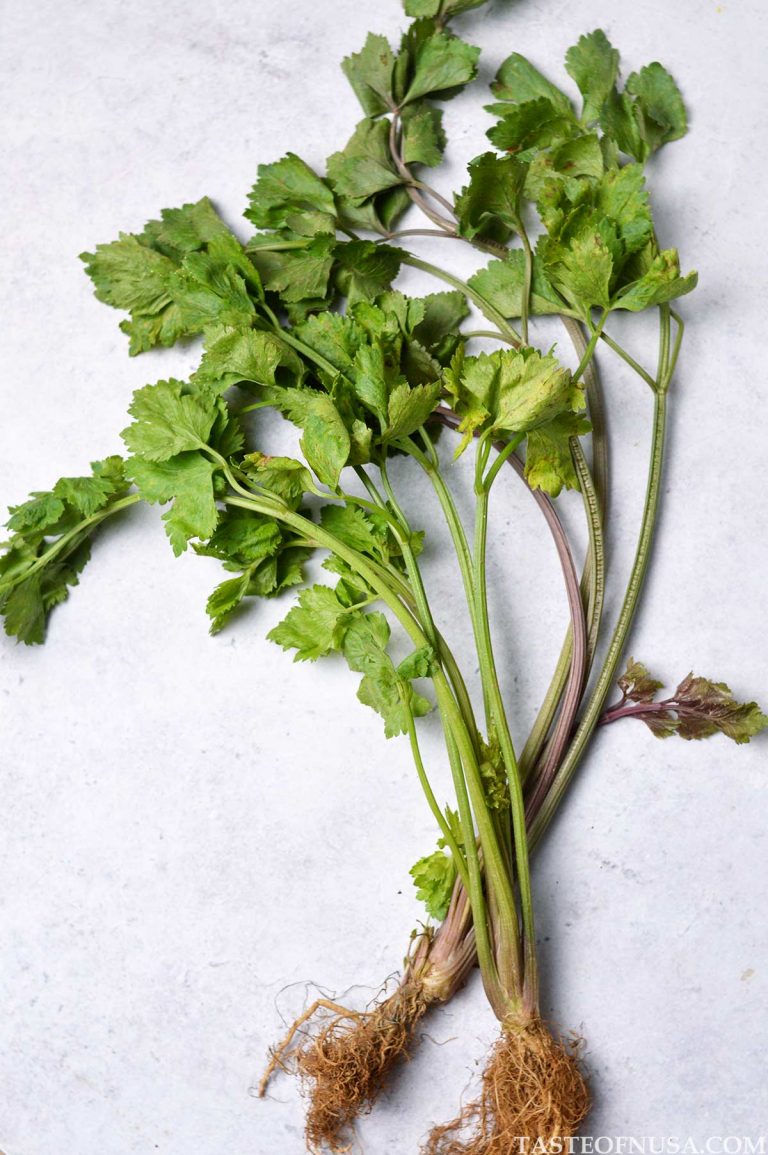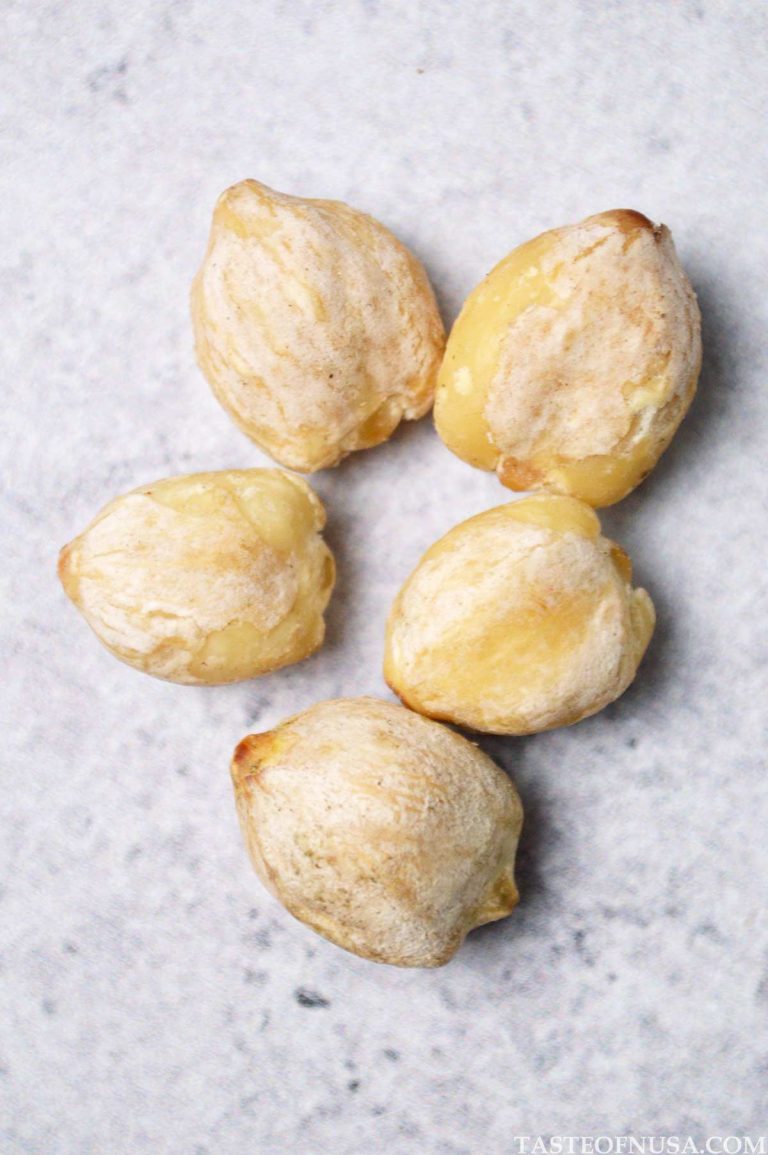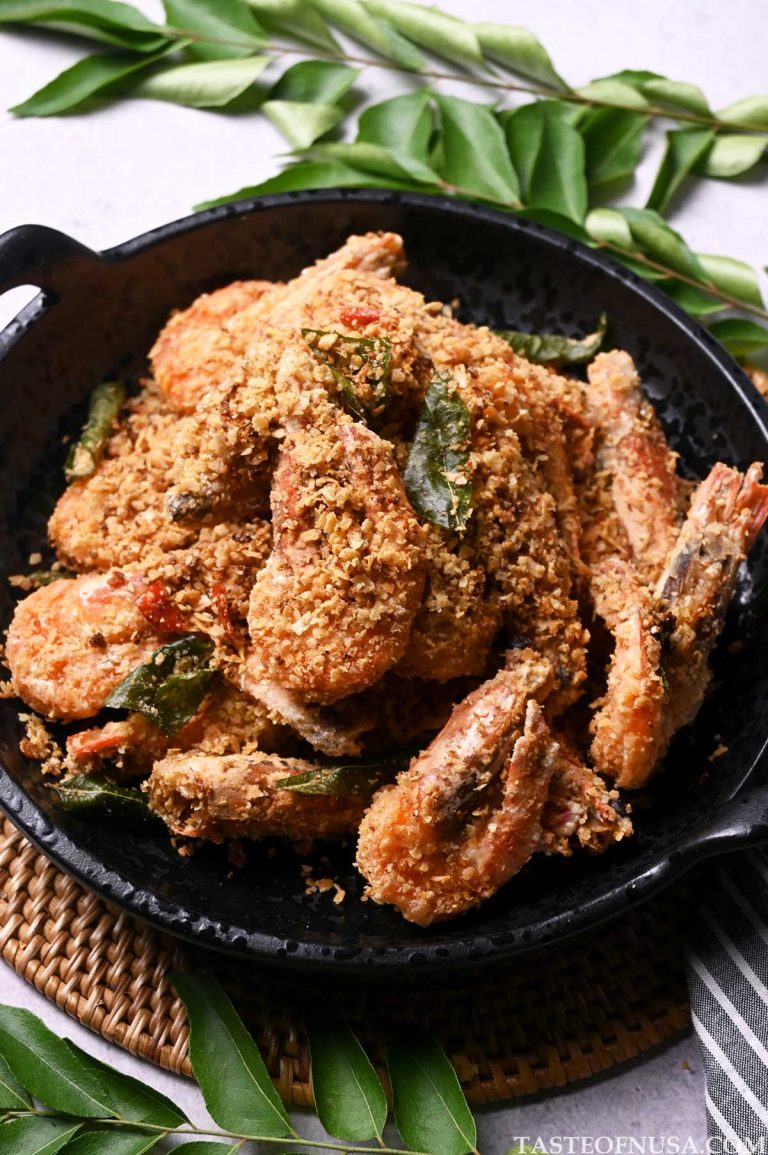Curry Leaves
Curry leaves are often used in many Indian and Southeast Asian cuisines. They give a strong citrusy aromatic scent and a slightly bitter yet fresh taste to your dish.
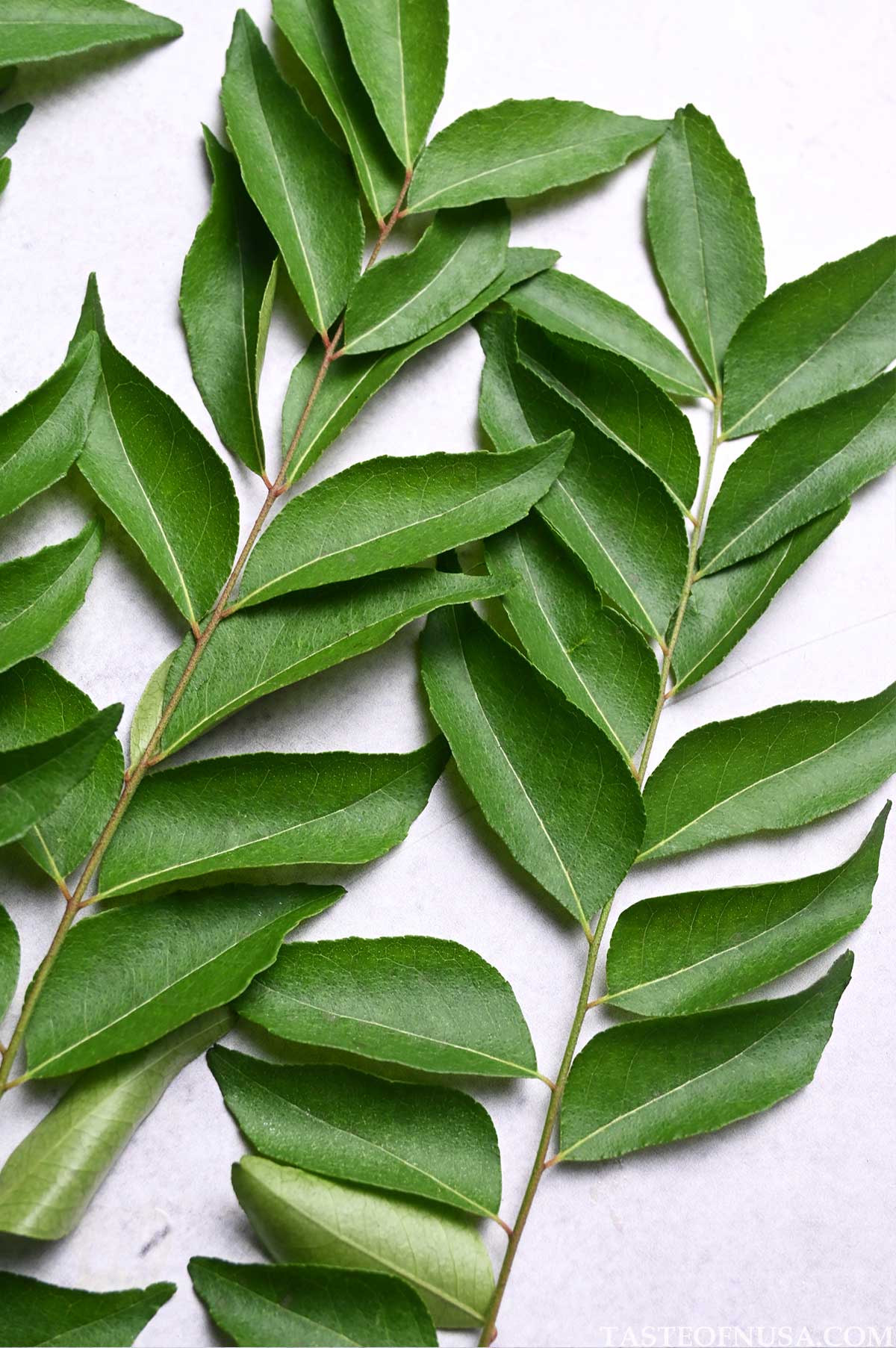
Other Names
- Murraya koenigii (Scientific name)
- करी पत्ता / kari patta (Hindi)
- 咖喱叶 / gālí yè (Chinese)
- Daun kari (Indonesian, Malay)
- Daun salam koja / daun temuri (Indonesian)
What are Curry Leaves?
Curry leaves are the leaves of the curry tree (Murraya koenigii). The tree is native to India, and its leaves are used for culinary and medicinal applications. The leaves are bright green in color, small in size, long, slender, and grow pinnately along a stem, and each branch can hold up to twenty, tightly clustered leaves.

The leaves emit a strong and distinct aroma when crushed, which is similar to the scent of curry. They can be used fresh or dry, ground or whole, often bloomed in oil to release their aroma and flavorful oils. They are highly aromatic and have a unique flavor with notes of citrus and slight bitterness.
Curry Leaves are Not the Same as Curry Powder
Despite its name and fragrance, curry leaves are not related to curry powder. Curry leaves are a fresh herb that is obtained from the curry tree. Meanwhile, curry powder is a spice blend made by grinding together a select bunch of dried spices and herbs. Curry powder is added to flavor the entire dish and curry leaves are used to temper the dish and impart a more subtle aroma.
What Do Curry Leaves Taste Like?
When it comes to flavor, curry leaves offer a unique blend of citrusy, nutty, and slightly bitter notes. They have a strong aroma that is often described as a combination of lemon, curry, and spice. The fragrance intensifies when the leaves are heated or crushed, releasing their aromatic oils.
One of the key characteristics of curry leaves is their ability to infuse dishes with a subtle and complex flavor. They are often used as a tempering or seasoning agent, added to hot oil to release their flavors and enhance the overall taste of the dish. The leaves impart a distinct earthiness and depth to dishes.
Culinary Uses
Curry leaves are a versatile ingredient that adds a burst of flavor to a wide range of dishes. They are commonly used in Indian, Sri Lankan, and Southeast Asian cuisines, where they are considered an essential component of many traditional recipes. The vibrant green color and unique taste of curry leaves make them a visually appealing and flavorful addition to various culinary creations.
One of the most popular culinary uses of curry leaves is in curries and gravies. The leaves are often added during the tempering process, where they are sautéed in hot oil or ghee along with other spices. This technique allows the leaves to release their aromatic oils and infuse the dish with their distinct flavor. The leaves can also be finely chopped and added to salads, stir-fries, and marinades, providing a fresh and zesty element to the dish. Unlike bay leaves, you do not need to pick out the curry leaves from your food.
Where to Buy
In Malaysia, Singapore, and India, curry leaves are sold in wet markets or supermarkets. In Indonesia, it will be tough to find them offline. You can buy the dried curry leaves online instead.
In Western countries, you may find curry leaves in Indian grocery stores and some Asian supermarkets. If you can’t find curry leaves in nearby stores, you can buy fresh curry leaves as well as dried curry leaves online on Amazon.
How to Choose
When shopping for fresh leaves, look for small leaves, which are younger and more tender. Choose dark green color leaves without any bruising. Avoid parched, browning, darkening, or wet-looking leaves, and keep them away from heat and moisture whenever possible.
Choose fresh curry leaves if possible instead of dried ones. The fresh leaves have a stronger flavor and aroma than the dried leaves. Stores sell sprigs of packaged curry leaves, and most recipes will call for individual leaves. So you can discard the stem.
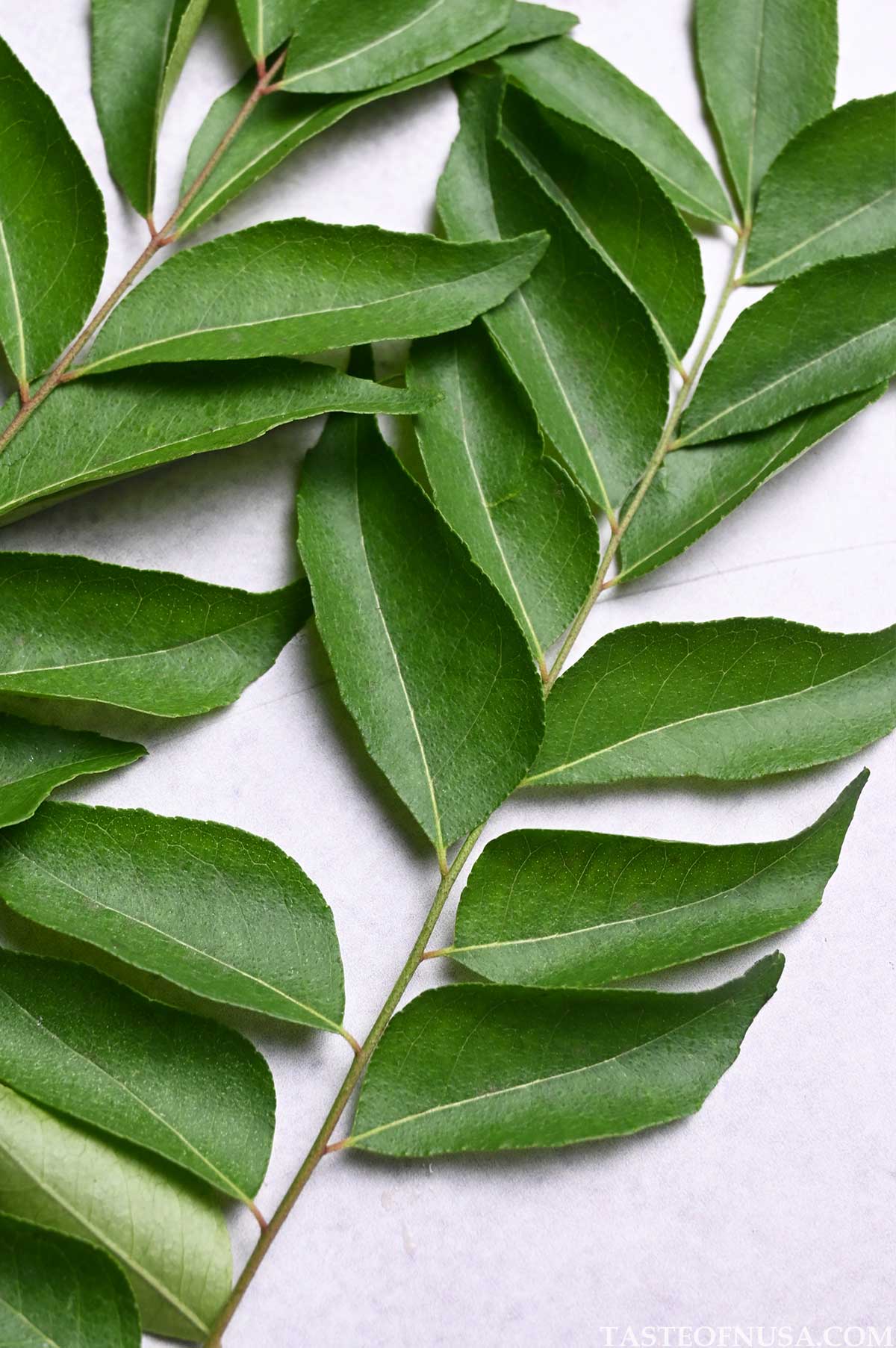
Substitutions
There is no substitute for curry leaves, so skip them if you do not have them. You cannot substitute curry leaves and curry powder for each other!
How to Store
No matter how you want to store the leaves, make sure to wash the leaves first under cold water to remove any dirt or debris. After that, spread them out in a single layer on a kitchen or paper towel and gently wipe them dry. You may alternatively let them air dry on the kitchen towel for a few hours.
Here are a few ways to store curry leaves and extend their shelf life:
- Refrigerate curry leaves in an airtight container, wrapped in paper towels to absorb any excess moisture and they will stay good for 2 weeks.
- Air dry them in a large tray lined with paper towels and let them sit at room temperature for 2 to 3 days. Once they are dried, they will look wilted and feel crispy. Then store them in a glass jar in your pantry. Dried curry leaves stay good for 2-3 months. It is important to dry them in the shade to retain as much flavor. Sun drying is faster but will result in losing most of the flavor and aroma.
- Freeze them in a vacuum pack so that they don’t oxidize and change color. Exposure to air makes them slimy and dark and ruins the flavor.
Curry Leaves Usage in Indonesian Cooking
In Indonesia, curry leaves are not so popular. Generally, curry leaves are used as a spice for typical dishes from Sumatra Island (the Western part of Indonesia), especially in Aceh province. Several types of dishes are required to use these leaves, such as curry, laksa, gulai, and Ayam Tangkap (spiced fried chicken).


